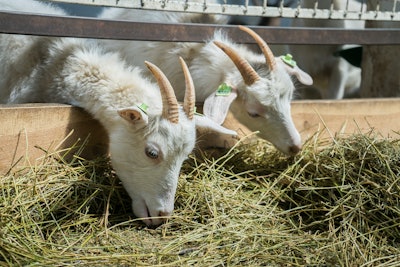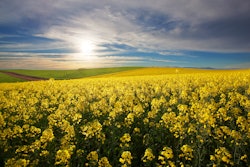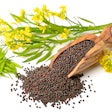
Although neither would be considered a major U.S. industry today, researchers at Prairie View A&M University in Texas believe hemp and goats — both growing businesses in the U.S. — could be the perfect pairing.
Feeding hemp to cattle has proven a somewhat tricky proposition, with some studies concluding that drug-like compounds from the hemp may bioaccumulate in meat and milk products. But goats have a different digestive system that may enable them to make better use of hemp byproducts without putting consumers at risk, according to Negusse Kidane, an assistant professor of animal sciences at Prairie View A&M University in Prairie View, Texas.
“Goats have a different feed preference than cattle, and goats are more of browsers,” Kidane said. “When we say browsers, they prefer to eat leaves, twigs, and fruits from shrubs and trees, where cattle are grazers that eat grasses and hay. So our hypothesis is that because hemp is a shrub, not a grass, and goats can make use of shrubs better than cattle, that hemp can serve as a major source of feed for goats.”
Kidane's team will spend the next three years evaluating the nutritional profile of hemp and trialing it as a feed for meat and dairy goats with the help of a US$300,000 grant from the U.S. Department of Agriculture's National Institute of Food and Agriculture. Kidane is also looking for hemp producers willing to partner on the project.
Hemp has become an important emerging crop in part thanks to the popularity of CBD, or cannabidiol oil, as a supplement that may reduce pain and inflammation without impairing cognition. However, the production of this oil leaves behind large quantities of spent byproducts, similar to the production of soybean oil. These byproducts could be used to replace grain in animal feed — a particularly interesting prospect considering today's high grain prices, Kidane said.
Goats, similarly, are not a major agricultural product in the U.S., but interest in goats as a source of meat and milk is growing, Kidane said. The majority of the 2.5 million goats raised in the U.S. are primarily located in Texas, and mostly raised by small-scale farmers looking to produce goat meat and milk as a second source of income. Demand for goat meat has also increased, Kidane said, with the increase of immigrants from Africa, Latin America and Asia. About 40% of the goat meat consumed in the U.S. is imported, Kidane said.
Should feeding hemp to goats prove viable, Kidane believes more farmers would make use of the low-cost feed to boost production and meet this growing demand for goat milk and meat.














